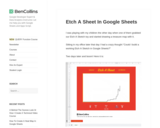
Build a working Etch-A-Sketch using Google Sheets.
- Subject:
- Educational Technology
- Professional Learning
- Material Type:
- Lesson Plan
- Provider:
- Provider Set:
- Google for Education
- Author:
- Ben Collins
- Date Added:
- 05/18/2022

Build a working Etch-A-Sketch using Google Sheets.

Students learn to evaluate the credibility of an online source.

The students will examine, explain, and evaluate Article II, Section 1 of the US Constitution for specific information concerning the eligibility requirements and election process for the office of President of the United States and develop a position and express a viewpoint on the lesson’s "essential question": "How democratic is the American election process for the office of president?"

Students will examine aspects of Article II of the Constitution for specific information related to the requirements for and method of electing the president.

Well known for addressing social issues in the world through her poetry, Maya Angelou's moving poems serve to teach historical topics in this lesson. To understand the world that surrounded her, students practice their visual literacy skills as they first examine photographs from the Library of Congress. These primary sources illustrate some of the events that affected her life and thus her writing. Next students research these events in order to create trading cards using the ReadWriteThink Trading Card Creator Student Interactive. While reading Angelou's poems, students share the trading cards to better understand the background for her writing.
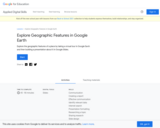
Students will explore geographic features around the world using Google Slides and Earth.

We hope that you and your students enjoy this experience as they develop new connections and appreciations for art, indigenous heritage, and mathematizing the world.

Facial recognition is one of the many applications of AI technology. Like other technologies, facial recognition offers both opportunities to improve our lives and potential risks. Use this dilemma and thinking routine to help students consider the benefits and drawbacks of facial recognition.

In this lesson, students review examples of misinformation, identify a rumor pattern and create a list of red flags to watch out for. Then students will create a social media post warning others to be on the lookout for this type of misinformation and directing them to credible sources about the subject. Finally, students will discuss the impact of misinformation on a democratic society.

TIn this lesson we will be discussing with high school students how to protect themselves from fake news. We will be doing an activity that has them using these skills in real time.

Resource contains activity prompts, essay topics and ideas, and other lesson activities that coincide with reading Farewell to Manzanar and learning about Japanese Internment

This lesson addresses two essential questions: To what extent does the Bill of Rights provide a "blanket of protection" for American citizens? Why do many Americans believe that the Bill of Rights is especially relevant today?
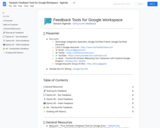
Share some great Google Docs practices with your students through this amazing post from Control Alt Achieve.
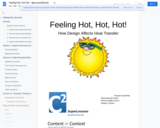
This project will be focused on designing, constructing and evaluating different containers to determine the optimal design for heat retention. After students have constructed their designs and collected and shared data, students will evaluate the class data to create an optimal design for our culminating event: warming ooey, gooey chocolate chip cookies to perfection! Through this activity, students will learn about energy transfer, engineering design process, data collection, graphing, rate of change, optimization, surface area and proportions. The students will test the effectiveness of their design using Vernier Probes to gather quantitative data and graphing the rate of temperature change. They will then create a poster presentation to share their data to the class. Students will use their mathematical skills to quantitatively analyze the strength and weaknesses of their designs while enjoying some delicious, toasty, warm cookies.
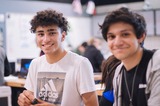
This lesson plan promotes the use of written and spoken academic language by multilingual students. It is based on secondary standards. It uses filmmaking to bring writing and speaking together while focusing on academic langauge. Photo by Jeswin Thomas on Unsplash

Students explore the concept of the mean as they examine and compare scores for various sports events.

Students will create a data set and explore it for Mean, Median, and Mode.
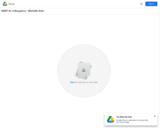
Students will conduct a number of investigations involving density and buoyancy to understand the forces applied to objects and the resulting interactions among them.

Teacher and student materials, information, and guidance about exploration of presidential debates, debate formats, candidate strategies, civic issues, and teen perspectives.

This lesson will use close reading of documentary selections and class discussion to analyze the concepts of “freedom” and “equality” as they have appeared and been tested throughout American history. By the conclusion of this lesson, students should be able to view these ideas as contested concepts that can and often do exist in tension. Students will assess whether or not “equality” comes at the expense of “freedom” and vice versa.